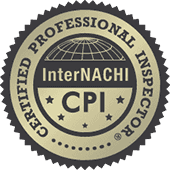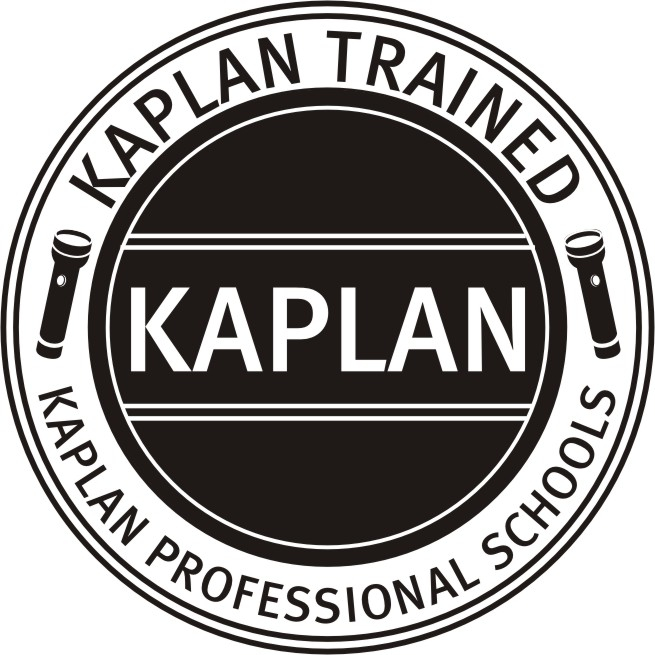|
|
This is info1. Definitions and Scope.
2. Standards of Practice
2.1. Roof
2.2. Exterior
2.3. Basement, Foundation, Crawlspace & Structure
2.4. Heating
2.5. Cooling
2.6. Plumbing
2.7. Electrical
2.8. Fireplace
2.9. Attic & Insulation
2.10. Doors, Windows & Interior
3. Limitations, Exceptions & Exclusions
4. Glossary of Terms
1. Definitions and Scope
1.1. A Home Inspection is a non-invasive, visual examination of a residential dwelling, performed for a fee, which is designed to identify observed material defects within specific components of said dwelling. Components may include any combination of mechanical, structural, electrical, plumbing, or other essential systems or portions of the home, as identified and agreed to by the Client and Inspector, prior to the inspection process.
I. A home inspection is intended to assist in evaluation of the overall condition of the dwelling. The inspection is based on observation of the visible and apparent condition of the structure and its components on the date of the inspection, and not the prediction of future conditions.
II. A home inspection will not reveal every concern that exists or ever could exist, but only those material defects observed on the day of the inspection.
III. A home inspection can include a survey and/or analysis of energy flows and usage in a residential property if the client requests it.
1.2. A Material Defect is a condition of a residential real property, or any portion of it, that would have a significant, adverse impact on the value of the real property, or that involves an unreasonable risk to people on the property. The fact that a structural element, system or subsystem is near, at or beyond the end of the normal useful life of such a structural element, system or subsystem is not by itself a material defect.
1.3. An Inspection Report shall describe and identify, in written format, the inspected systems, structures, and components of the dwelling, and shall identify material defects observed. Inspection reports may contain recommendations regarding conditions reported or recommendations for correction, monitoring or further evaluation by professionals, but this is not required.
2. Standards of Practice
2.1. Roof
I. The inspector shall inspect from ground level or eaves:
A. the roof covering;
B. the gutters;
C. the downspouts;
D. the vents, flashings, skylights, chimney and other roof
penetrations; and
E. the general structure of the roof from the readily accessible panels, doors or stairs.
II. The inspector is not required to:
A. walk on any pitched roof surface.
B. predict the service life expectancy.
C. inspect underground downspout diverter drainage pipes.
D. remove snow, ice, debris or other conditions that prohibit the observation of the roof surfaces.
E. move insulation.
F. inspect antennae, lightning arresters, de-icing equipment, or similar attachments.
G. walk on any roof areas that appear, in the opinion of the inspector, to be unsafe.
H. walk on any roof areas if it might, in the opinion of the inspector, cause damage.
I. perform a water test.
J. warrant or certify the roof.
K. confirm proper fastening.
2.2. Exterior
I. The inspector shall inspect:
A. the siding, flashing and trim;
B. all exterior doors, decks, stoops, steps, stairs, porches, railings, eaves, soffits and fascias;
C. and report as in need of repair any spacings between intermediate balusters, spindles, or rails for steps, stairways, balconies, and railings that permit the passage of an object greater than 4 inches in diameter;
D. a representative number of windows;
E. the vegetation, surface drainage, and retaining walls when these are likely to adversely affect the structure;
F. and describe the exterior wall covering.
II. The inspector is not required to:
A. inspect or operate screens, storm windows, shutters, awnings, fences, outbuildings, or exterior accent lighting.
B. inspect items, including window and door flashings, which are not visible or readily accessible from the ground.
C. inspect geological, geotechnical, hydrological and/or soil conditions.
D. inspect recreational facilities or playground equipment.
E. inspect seawalls, break-walls and docks.
F. inspect erosion control and earth stabilization measures.
G. inspect for safety-type glass.
H. inspect underground utilities.
I. inspect underground items.
J. inspect wells or springs.
K. inspect solar, wind, or geothermal systems.
L. inspect swimming pools or spas.
M. inspect septic systems or cesspools.
N. inspect sprinkler systems.
O. inspect drain fields or drywells.
P. determine the integrity of the thermal window seals or damaged glass.
Q. inspect any damaged glass.
2.3. Basement, Foundation & Crawlspace
I. The inspector shall inspect:
A. the basement;
B. the foundation;
C. the crawlspace;
D. the visible structural components;
E. and report on the location of under-floor access openings;
F. and report any present conditions or clear indications of active water penetration observed by the inspector;
G. for wood in contact or near soil;
H. and report any general indications of foundation movement that are observed by the inspector, such as, but not limited to: sheetrock cracks, brick cracks, out-of-square door frames, or floor slopes;
I. and report on any cutting, notching and boring of framing members which may present a structural or safety concern.
II. The inspector is not required to:
A. enter any crawlspaces that are not readily accessible or where entry could cause damage or pose a hazard to the inspector.
B. move stored items or debris.
C. operate sump pumps with inaccessible floats.
D. identify size, spacing, span, location or determine adequacy of foundation bolting, bracing, joists, joist spans or support systems.
E. provide any engineering or architectural service.
F. report on the adequacy of any structural system or component.
2.4. Heating
I. The inspector shall inspect:
A. the heating systems using normal operating controls, an describe the energy source and heating method;
B. and report as in need of repair heating systems which do not operate;
C. and report if the heating systems are deemed inaccessible.
II. The inspector is not required to:
A. inspect or evaluate interiors of flues or chimneys, fire chambers, heat exchangers, combustion air systems, fresh air intakes, humidifiers, dehumidifiers, electronic air filters, geothermal systems or solar heating systems.
B. inspect fuel tanks or underground or concealed fuel supply systems.
C. determine the uniformity, temperature, flow, balance, distribution, size, capacity, BTU, or supply adequacy of the heating system.
D. light or ignite pilot flames.
E. activate heating, heat pump systems or other heating systems when ambient temperatures or other circumstances are not conducive to safe operation or may damage the equipment.
F. override electronic thermostats.
G. evaluate fuel quality.
H. verify thermostat calibration, heat anticipation, or automatic setbacks, timers, programs or clocks.
2.5. Cooling
I. The inspector shall inspect:
A. the central cooling equipment using normal operating controls.
II. The inspector is not required to:
A. determine the uniformity, temperature, flow, balance, distribution, size, capacity, BTU, or supply adequacy of the cooling system.
B. inspect window units, through-wall units, or electronic air filters.
C. operate equipment or systems if exterior temperature is below 60 degrees Fahrenheit, or when other circumstances are not conducive to safe operation, or may damage the equipment.
D. inspect or determine thermostat calibration, cooling anticipation, or automatic setbacks or clocks.
E. examine electrical current, coolant fluids or gases, or coolant leakage.
2.6. Plumbing
I. The inspector shall:
A. inspect and determine if the water supply is public or private;
B. verify the presence of and identify the location of the main water shut-off valve;
C. inspect the water heating equipment, including venting, connections, energy source supply system, and seismic bracing, and verify the presence or absence of temperature-pressure relief valves and/or Watts 210 valves;
D. flush toilets;
E. water-test sinks, tubs and showers for functional drainage;
F. inspect the interior water supply, including all fixtures and faucets;
G. inspect the drain, waste and vent systems, including all fixtures;
H. describe any visible fuel storage systems;
I. inspect the drainage sump pumps and test pumps with accessible floats;
J. inspect and describe the water supply, drain, waste and main fuel shut-off valves, as well as the location of the water main and main fuel shut-off valves;
K. inspect and report as in need of repair deficiencies in the water supply by viewing the functional flow in two fixtures operated simultaneously;
L. inspect and report as in need of repair deficiencies in installation and identification of hot and cold faucets;
M. inspect and report as in need of repair mechanical drain-stops that are missing or do not operate if installed in sinks, lavatories and tubs; and
N. inspect and report as in need of repair commodes that have cracks in the ceramic material, are improperly mounted on the floor, leak, or have tank components which do not operate.
II. The inspector is not required to:
A. light or ignite pilot flames.
B. determine the size, temperature, age, life expectancy or adequacy of the water heater.
C. inspect interiors of flues or chimneys, combustion air systems, water softening or filtering systems, well pumps or tanks, safety or shut-off valves, floor drains, lawn sprinkler systems or fire sprinkler systems.
D. determine the exact flow rate, volume, pressure, temperature, or adequacy of the water supply.
E. determine the water quality or potability or the reliability of the water supply or source.
F. open sealed plumbing access panels.
G. inspect clothes washing machines or their connections.
H. operate any main, branch or fixture valve.
I. test shower pans, tub and shower surrounds or enclosures for leakage.
J. evaluate the compliance with local or state conservation or energy standards, or the proper design or sizing of any water, waste or venting components, fixtures or piping.
K. determine the effectiveness of anti-siphon, back-flow prevention or drain-stop devices.
L. determine whether there are sufficient clean-outs for effective cleaning of drains.
M. evaluate gas, liquid propane or oil storage tanks.
N. inspect any underground or concealed fuel supply systems.
O. inspect any private sewage waste disposal system or component thereof.
P. inspect water treatment systems or water filters.
Q. inspect water storage tanks, pressure pumps or bladder tanks.
R. evaluate wait-time to obtain hot water at fixtures, or perform testing of any kind to water heater elements.
S. evaluate or determine the adequacy of combustion air.
T. test, operate, open or close safety controls, manual stop valves and/or temperature or pressure relief valves.
U. examine ancillary systems or components, such as, but not limited to, those relating to solar water heating, hot water circulation.
V. determine the existence or condition of polybutylene plumbing.
2.7. Electrical
I. The inspector shall inspect:
A. the service drop/lateral;
B. the meter socket enclosures;
C. the means for disconnecting the service main;
D. and describe the service disconnect amperage rating, if labeled;
E. panelboards and overcurrent devices (breakers and fuses);
F. and report on any unused circuit breaker panel openings that are not filled;
G. the service grounding and bonding;
H. a representative number of switches, lighting fixtures, and receptacles, including receptacles observed and deemed to be AFCI-protected during the inspection using the AFCI test button, where possible;
I. and test all Ground Fault Circuit Interrupter (GFCI) receptacles and GFCI circuit breakers observed and deemed to be GFCIs during the inspection using a GFCI tester, where possible;
J. and report the presence of solid conductor aluminum branch circuit wiring, if readily visible;
K. and report on any tested receptacles in which power was not present, polarity is incorrect, is not secured to the wall, the cover is not in place, the ground fault circuit interrupter devices are not properly installed or do not operate properly, evidence of arcing or excessive heat is present, or where the receptacle is not grounded or is not secured to the wall;
L. the service entrance conductors and the condition of the conductor insulation;
M. and report the absence of smoke detectors; and
N. service entrance cables, and report as in need of repair deficiencies in the integrity of the insulation, drip loop, or separation of conductors at weatherheads and clearances from grade or rooftops.
San Diego County Home Inspection - Insight Home Inspections
Phone #: 858-248-7944 | Robert Zamba | [email protected]
10755 Scripps Poway Parkway, #464
San Diego, CA 92131
San Diego Home Inspection Company - Home Inspector San Diego
Privacy Policy | Inspection Agreement PDF | Pool/Spa Inspection Agreement | Nachi Standards of Practice | Terms & Conditions
Copyright © sdinsightinspections.com. All rights reserved.






